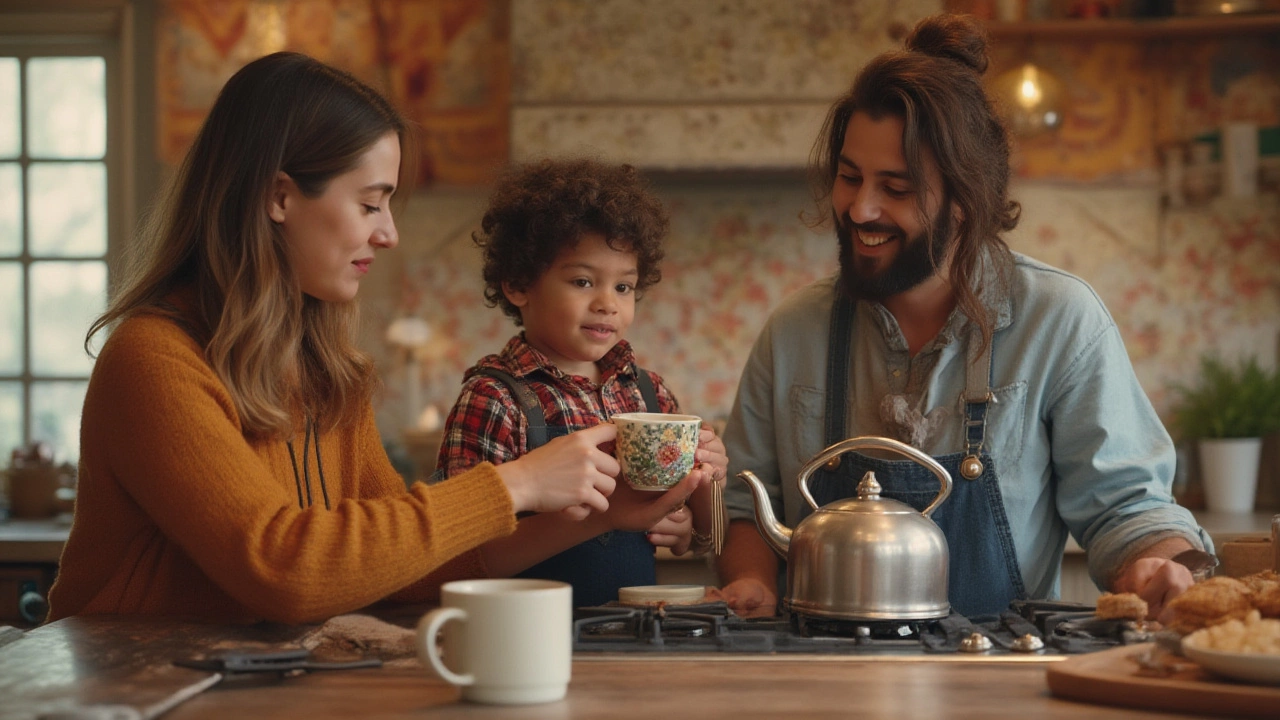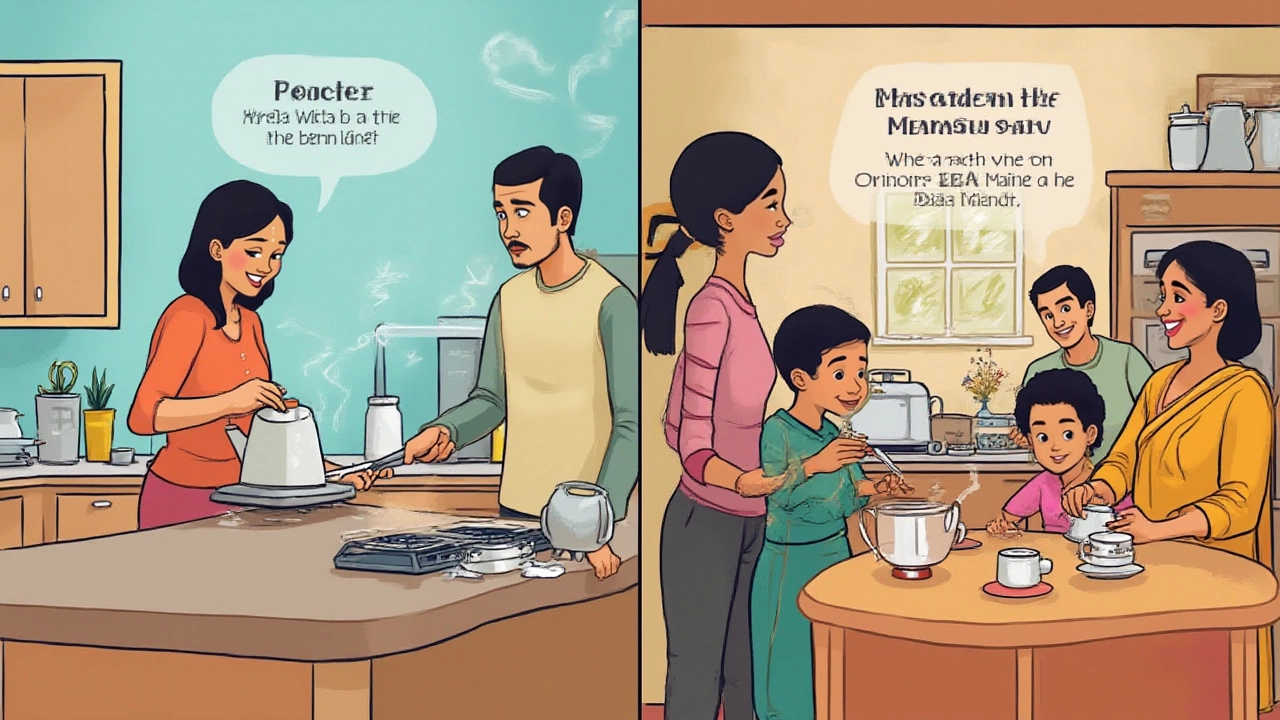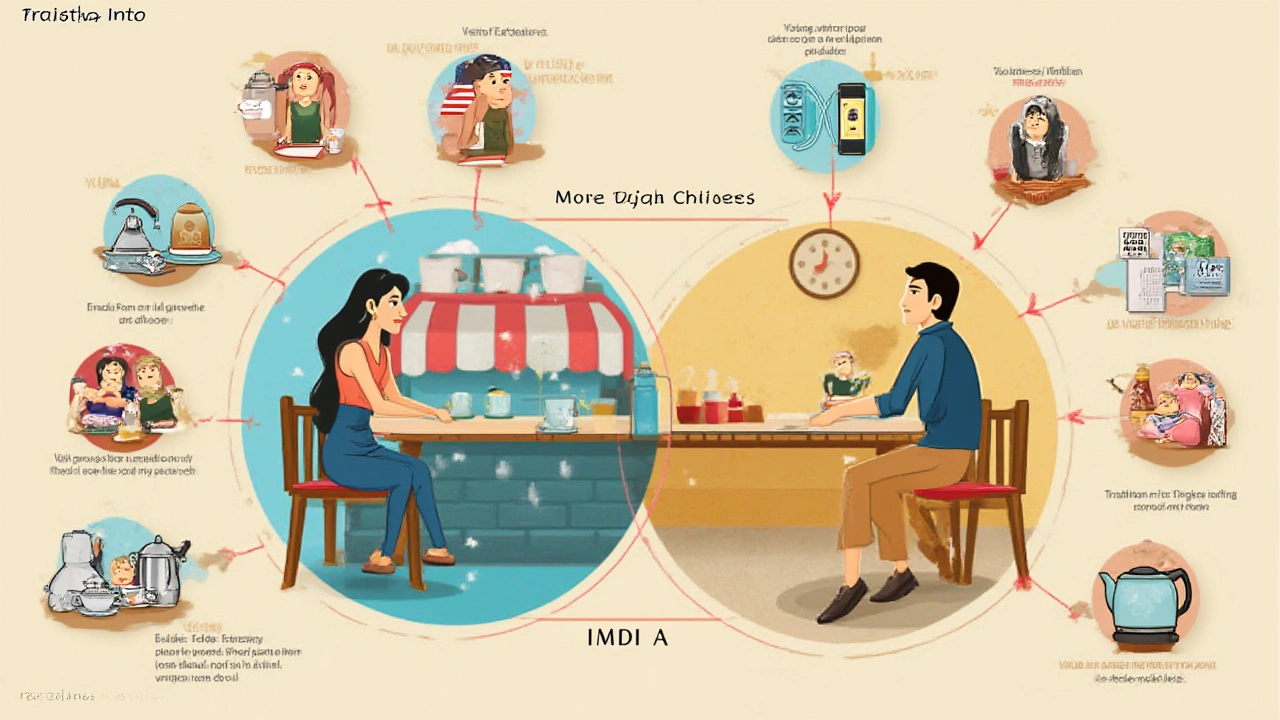
Ask a Brit or an Aussie what they’d grab for a morning cup of tea and they’ll point straight at their electric kettle. But step into your average American kitchen, and you’ll probably find a whistling stovetop kettle – if there’s a kettle at all. Water for tea? That’s often nuked in the microwave or boiled on the stove. It seems odd, especially with the electric kettle being a standard everywhere from Tokyo apartments to French country homes. So why are Americans missing out?
Electric Kettles: The Missing Piece in American Kitchens
Stop into any Target or Best Buy, and you’ll see shelves lined with blenders, toasters, even air fryers. Yet the humble electric kettle barely gets a nod. In the UK, nearly every household has one—according to the Office for National Statistics, 92% of Brits say they regularly use an electric kettle. In the US, though, that number hovers around 15%. Why the gap?
One big issue boils down—pun intended—to voltage. American outlets run on 120 volts; in the UK, Europe, Australia, and Asia, it’s 220-240 volts. That voltage difference means an electric kettle in Europe can draw more power, heating water way faster. In Britain, you get a cup of boiling water in under two minutes. In America, the same kettle takes three to five. Patience wears thin, and people just reach for the microwave.
But it’s not all about volts and watts. For a lot of Americans, daily tea drinking just isn’t the ritual it is elsewhere. Coffee dominates here. The National Coffee Association says 65% of American adults drank coffee daily in 2024, but less than 15% drank tea that often. And a lot of home coffee setups use drip or pod machines, which heat water on their own anyway. The result: people don’t think to buy an extra appliance.
Microwaves have elbowed in too. The US has 97% microwave oven ownership, the highest in the world based on Statista’s 2023 report. Water in a mug, 90 seconds—done. Sure, the temperature control’s awkward and you might burn your tongue, but between hectic work schedules and impatient mornings, convenience wins.
Then there’s kitchen real estate. Americans love big fridges and fancy ranges, but countertop space is precious. If you’re already balancing a toaster, blender, and maybe an Instant Pot, an electric kettle seems like a luxury for the tea-obsessed. Stores do stock them, but talk to appliance buyers at Bed Bath & Beyond, and they’ll tell you electric kettles consistently lag behind blenders and air fryers in sales every year. Maybe not the most inspiring fact for kettle manufacturers, but true.
People also worry about safety and durability. American consumers often read horror stories about faulty wiring and plastic kettles that leave water tasting weird. In a 2022 Consumer Reports survey, about 20% of respondents said they were wary of buying small electric appliances because of fire or melting risks. This might be an overblown worry, but it lingers.

Not Just Tea: When An Electric Kettle Wins
If you’ve ever had to quickly whip up instant ramen in a tiny dorm room, you know the appeal of an electric kettle. Travelers, parents, and college students in the US do buy them—especially those with international taste buds or a kettle-shaped gap left by years abroad. But it’s not just about tea or ramen.
- Hot chocolate night? Quick oatmeal? An electric kettle is the real MVP. It boils water fast and (as long as you keep it clean) gives you pure, odorless hot water for anything.
- Got a French press? Most cheap American drip machines heat water to only 190°F, but to truly extract flavor, you want it closer to boiling (about 205°F). A good electric kettle will let you nail that sweet spot.
- If you love pourover coffee, kettles designed with a gooseneck spout give you far more control than a clumsy pot or microwave-warmed mug. Baristas swear by them.
And sure, stovetop kettles feel classic, but ask anyone who’s tried both, and they’ll tell you electric wins for speed and energy efficiency. A 2021 study by the US Energy Information Administration found that boiling a liter of water in a microwave used 50% more electricity than in an electric kettle. Little savings like that add up—if you’re boiling water daily, you could save enough energy per year to run your laptop for a month.
Plus, electric kettles come with safety cut-offs and auto-shutoff features, so the days of burnt-out kettles or scorched pans are over. You won’t have to wonder if you left the stove on while running out the door.
| Country | Household Electric Kettle Ownership | Most Common Hot Drink | Average Boiling Time (1L) |
|---|---|---|---|
| UK | 92% | Tea | ~2 minutes |
| USA | 15% | Coffee | ~4 minutes |
| Australia | 87% | Tea/Coffee | ~2 minutes |
| Japan | 84% | Green Tea | ~2 minutes |
Notice that strong tea-drinking cultures are right up there with kettle adoption. When you pick up the habit, you might just become a passionate convert.

Switching Up the Routine: Tips and Myths for US Kettle Converts
If the voltage issue bugs you, don’t worry—US-specific kettles have adjusted to work with 110-120V outlets. Brands like Hamilton Beach and Cuisinart design electric kettles that still beat a microwave, even if not as fast as a British model. What you want is something in the 1500-watt range for best results. Avoid anything labeled "travel" or "compact"—they’re cute, but slow. Aim for full-size, 1.5-liter models for family use or 1-liter if you’re solo.
Concerned about taste? Ditch anything with plastic parts touching the water. Stainless-steel interiors or borosilicate glass are best. Every so often, run a mixture of white vinegar and water through to descale it and keep mineral build-up at bay, especially if you live in a hard-water area. It's low-maintenance but keeps it running like new.
- Don’t fill above the max line. Overfilling makes kettles spit or boil over. Underfilling can trigger the safety shut-off too soon.
- Experiment with temperature control models, especially if you dabble in green or white tea, which scald at boiling. Some kettles have preset temperatures for coffee, green tea, and black tea—no guesswork needed.
- Store your kettle unplugged when not in use, and never immerse the base in water. That seems obvious, but the number of returned kettles due to waterlogged bases might shock you.
If you’re a parent, a kettle can help sanitize baby bottles or heat water safely for oatmeal without using the stove. College dorm dwellers can cook quick meals with hot water—instant couscous, dehydrated soup, and even mac and cheese cups. Adventure lovers use them in RVs or cabins without ranges.
Still not convinced? Try borrowing one for a week. You’ll probably wind up boiling water more often than you thought—faster, easier, and without burning your hands on a steaming pot.
Step into any expat forum and you’ll spot homesick Brits posting long tales about missing their kettle. For them, and maybe for you, it’s a tiny appliance that changes the flow of your day. The secret: Americans haven’t really given the electric kettle a fair shake yet. Maybe it’s time.